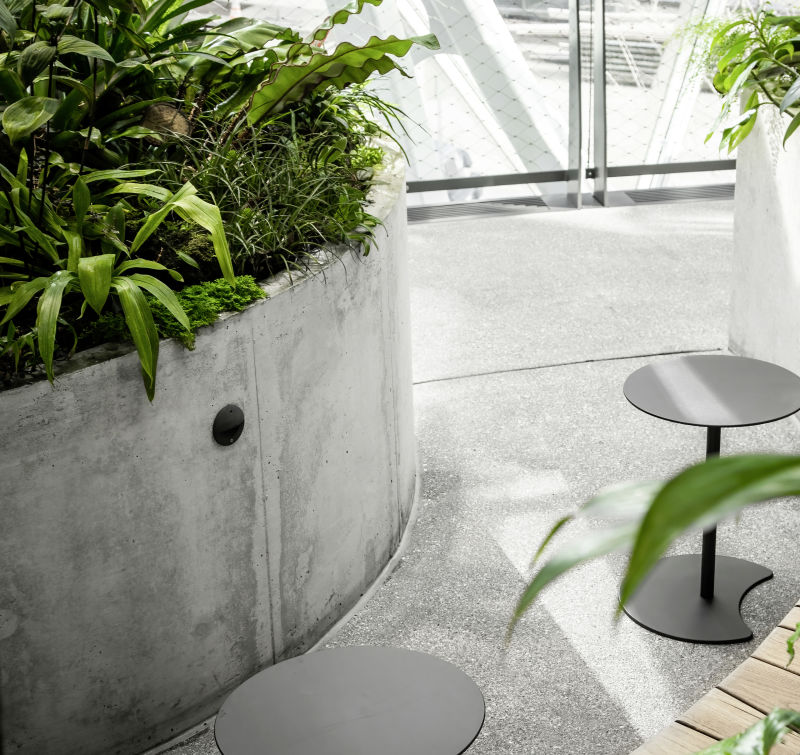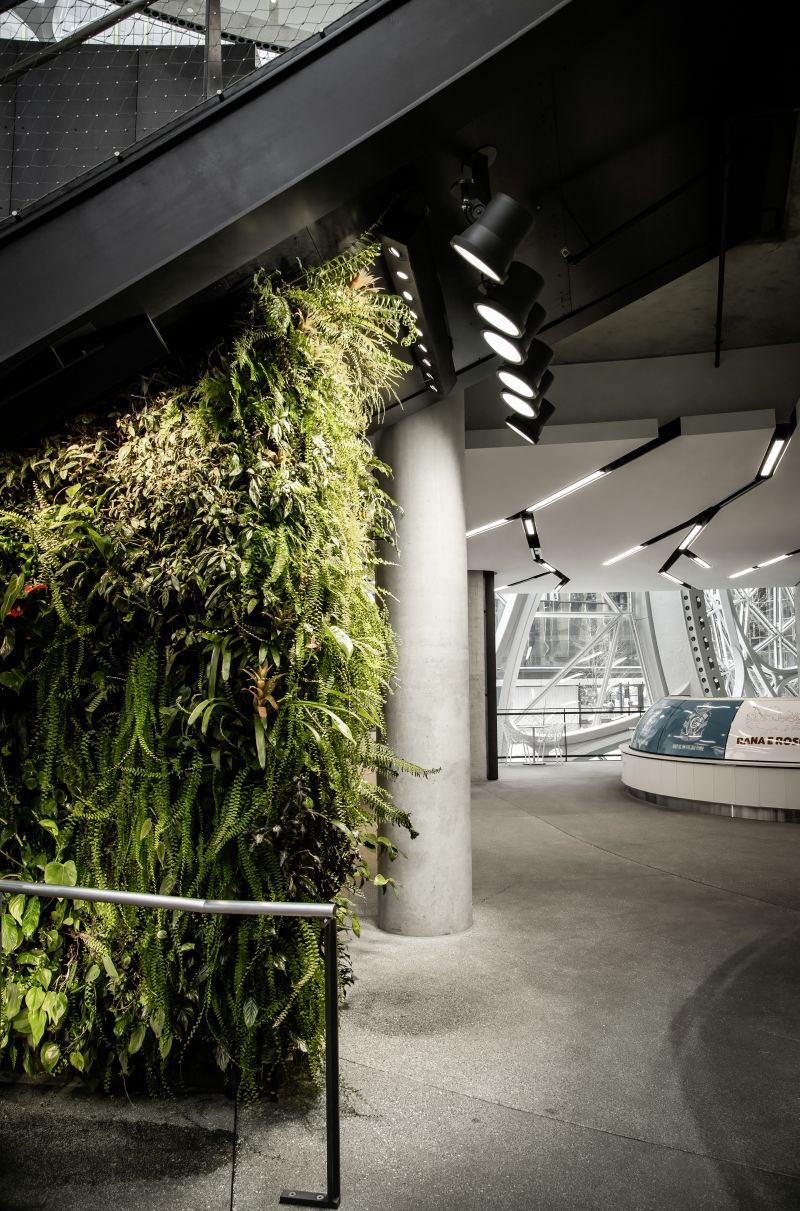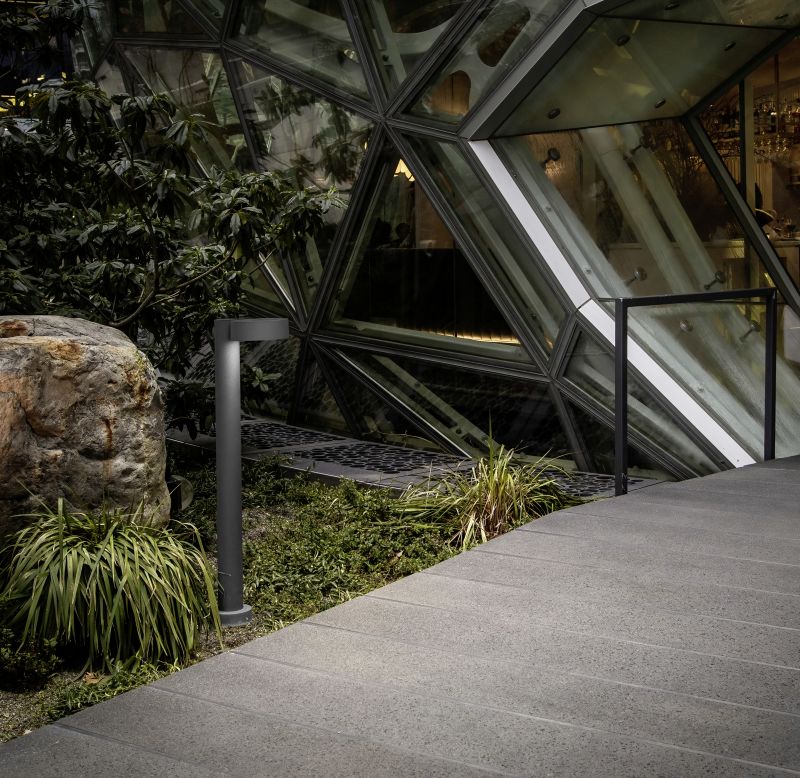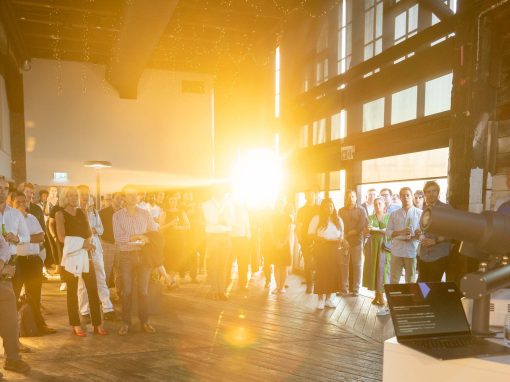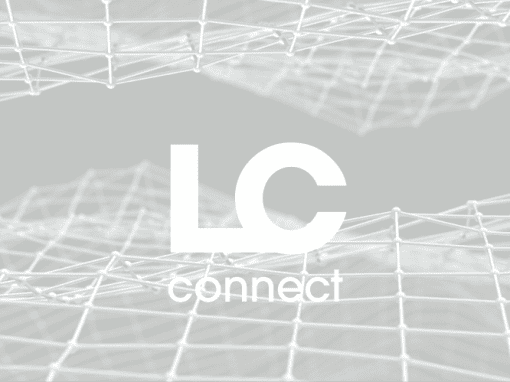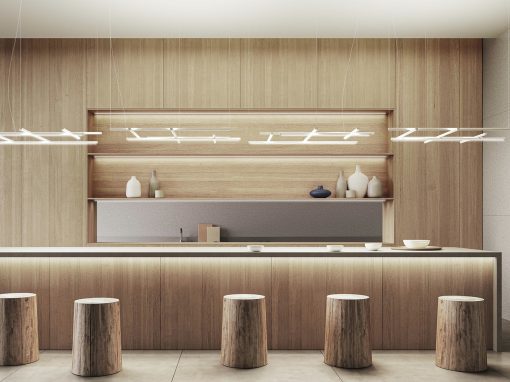BRINGING NATURE INTO THE INTERIOR
It has been known for a long time that a lack of access to nature is a source of deficiency for people living and working in urban environments. We’re finally getting real statistics to back it up with a surge in scientific and architectural interest in our affinity with nature, a concept known as biophilia.
“Biophilic Design” refers to incorporating nature into the built environment. It is derived from the Greek word Biophilia, which means “love of nature.” This design philosophy aims to create a relaxing environment with a connection to nature while boosting wellness, health, and productivity. The concept applies to both architecture and interior design and can transform the urban landscape from one of steel and cement to a greener vision.
THE BENEFITS OF BIOPHILIC DESIGN
Contributes to our bodily and mental well-being:
Sensory engagement with natural elements is intended to promote the physical and mental well-being of people who spend substantial time in a built environment by reducing stress and increasing productivity. With millions of people now living in cities or major towns, biophilic design can be used to improve the physical and emotional well-being of a substantial proportion of the population, whether employees, shoppers, or visitors.
In chaotic and stressful circumstances, such as a crowded office, shopping centre or even transport stations, the sympathetic nervous system, which is heavily involved in a “fight-or-flight” mode, is stimulated. Simultaneously, the parasympathetic nervous system is repressed, disturbing our natural balance and resulting in energy depletion and mental tiredness. Stress, frustration, impatience, and distraction can result from this. Human engagement with nature, on the other hand, decreases sympathetic activity, and as a result, stress and irritation are reduced, and concentration is improved.
Much has been published on the subject of mental health to support the concept that nature is crucial to our well-being. Greg Bratman, a Stanford researcher, demonstrated differences in people’s brain activity before and after walking for 90 minutes in either a vast park or a busy street in downtown Palo Alto. He discovered that individuals who walked in nature had lower activity in the subequal prefrontal cortex (where we process sad thoughts). Nature, he concluded, “cognitive advantage to be realized if we spend time immersed in a natural setting.”
Improves productivity:
It’s been proven that engaging with nature in this way enhances productivity, whether you’re looking at biophilic design ideas for businesses, schools, or even coworking spaces. Biophilic offices can see an 8% improvement in productivity, while schools that use biophilic design generally find 20-25% increases in attendance, test outcomes, and learning rates.
Attracting and retaining top talent:
Having a well-planned, appealing workspace full of natural light and biophilic components communicates who you are as a company. It also makes a significant statement about your social consciousness, environmental credentials, and compassion for your coworkers. We spend a lot of time at work, and we want it to be a pleasant experience.
Community and creative freedom:
There are numerous perspectives on the creative flexibility that biophilic design can provide. First, for those designing these spaces, architects and interior designers have discovered that biophilic design provides far more creative flexibility than they are accustomed to in the design process. Each situation and endeavour can be unique due to the natural elements involved. In addition to the design, once a biophilic environment is functional, and in use, creativity inside that area rises. It promotes melatonin generation, which boosts energy levels, produces happiness hormones, and regulates body clock cycles. When exposed to the space, this can aid in creativity.
DESIGN CONSIDERATIONS
People have traditionally approached biophilic design in a linear fashion, presuming that the installation of a few plants compensates for a full loss of nature (like a green band-aid). These tactics are overly simple and provide far too insignificant of a reaction. They may not be much more valuable than a placebo unless they are part of a larger lifestyle that puts us back outside and in contact with a variety of life.
The best assessment of a project’s biophilic demands is broad, complex, and in-depth. There is no one-size-fits-all approach to biophilic design; rather, there is a spectrum and a sweet spot that varies based on the circumstances. These design elements can be peaceful, elevating, and stress or anxiety-reducing. As we have a better understanding of the variables at work, we will be able to tailor our answers to the situation.
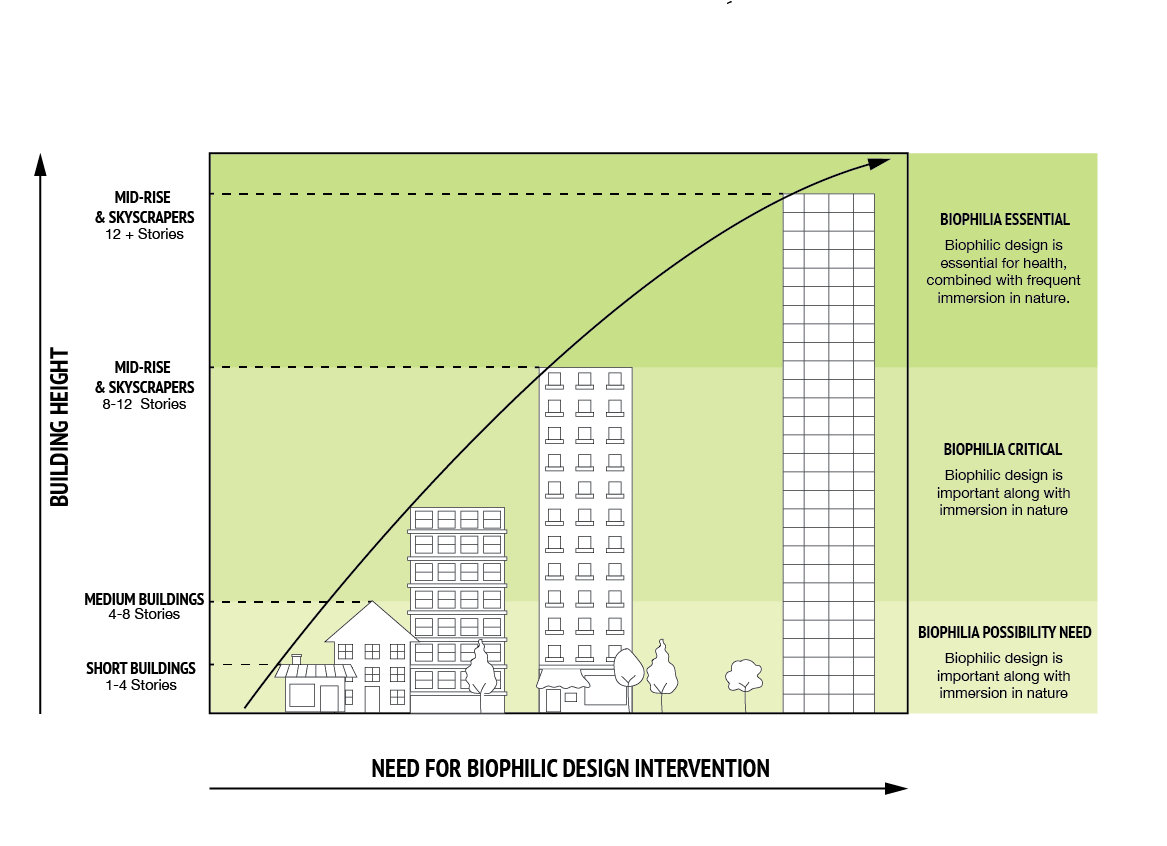
Plants should be included:
Get the correct amount of greens, and you’ll see a difference straight away. I enjoy waking up next to a lovely palm tree, and coming home to water the plants on my balcony is a great way to destress and reset and the end of the day. Plants are not only beautiful, but they are also a natural air cleanser and mood booster. More than just visual appeal plants can be used a design element to denote a separation in spaces, create a sense of privacy or for acoustic purposes.
Nature’s colours:
Nature is awash in colour, with each season providing a new theme. Design inspiration can be taken for these colours of nature. Colour psychology research reveals that colours elicit psychological reactions, influencing moods and emotions. These emotions are sometimes connected to the intensity of a hue. In other circumstances, they are the result of personal experience and cultural influences. For many people, the colour green is associated with nature and conjures up images of lush green grass, trees, and forests. Green is frequently regarded as a refreshing and calming colour and might help us feel comfortable in an unfamiliar environment.
Make use of natural materials:
Additional natural elements can be incorporated into a design, such as bamboo, cork, sustainable timber, stone, and rattan. Natural finishes can be used for furniture, decoration or in the base build.
Maximise Natural Light:
Vitamin D is essential for calcium management, decreasing high blood pressure, and improving muscle and overall health. Attempt to maximize natural light throughout by designing communal areas around sources of natural light such as skylights or an atrium. Improved artificial illumination in the office will also help. LED lighting technology, like that seen in Beyond Vision™, help to over a lack of natural lighting and can help regulate circadian rhythms.
The bottom line is simple: humans are supposed to interact with nature for the health and development of our bodies, brains, and communities. With biophilic design, we can transform our urban surroundings and concepts into environments that are positive for the people working and living in them as well as for the environment. While there are guidelines to follow to ensure that you get the most out of it, biophilic design is also about discovering, connecting, and doing what seems comfortable. Gorgeous settings, light, natural materials, and organic patterns can all be part of biophilic design. Beautiful rooms can be created through biophilic design that boosts mental health, explore creative pathways, and encourage community. The biophilic design allows you to get down to fundamentals and interact with nature by providing various benefits.
Written by
Anni Grindrod

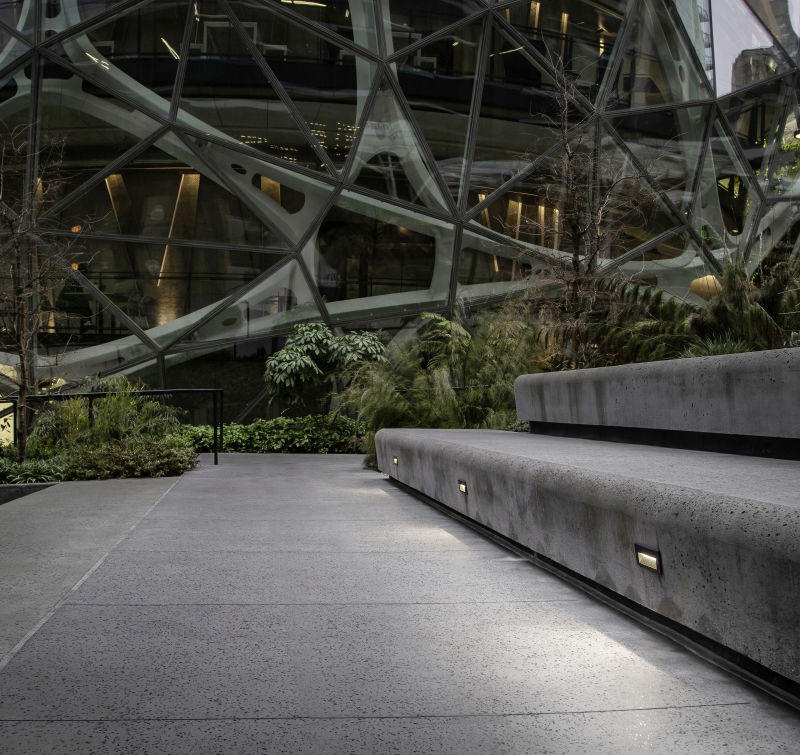
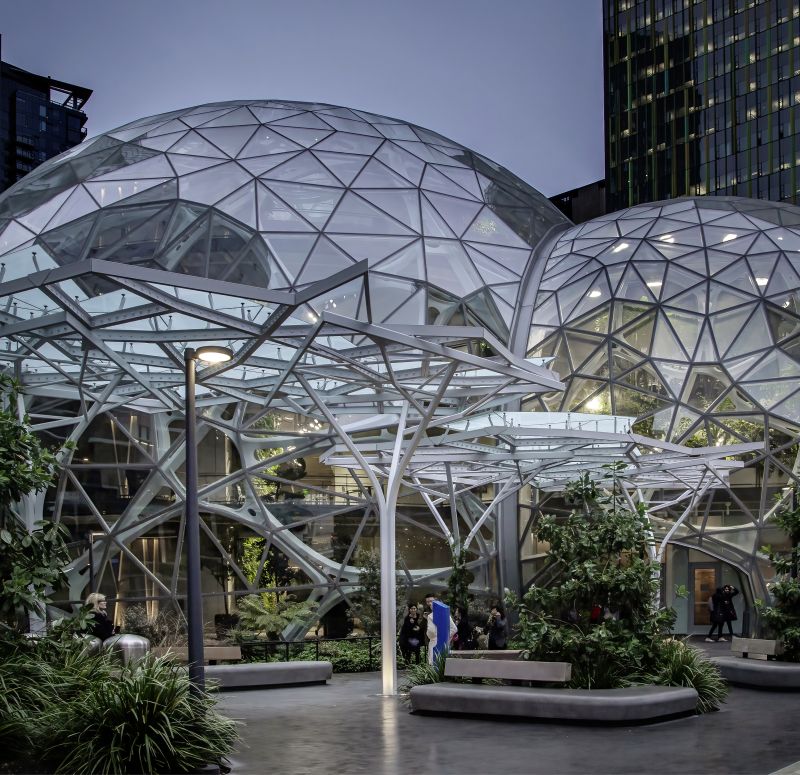
Amazon Spheres, Seattle.
With a clear focus on biophilic design, global architecture firm NBBJ has created a space in the middle of a densely built-up major US city that combines daily work with a harmonious, natural environment.
See full project
